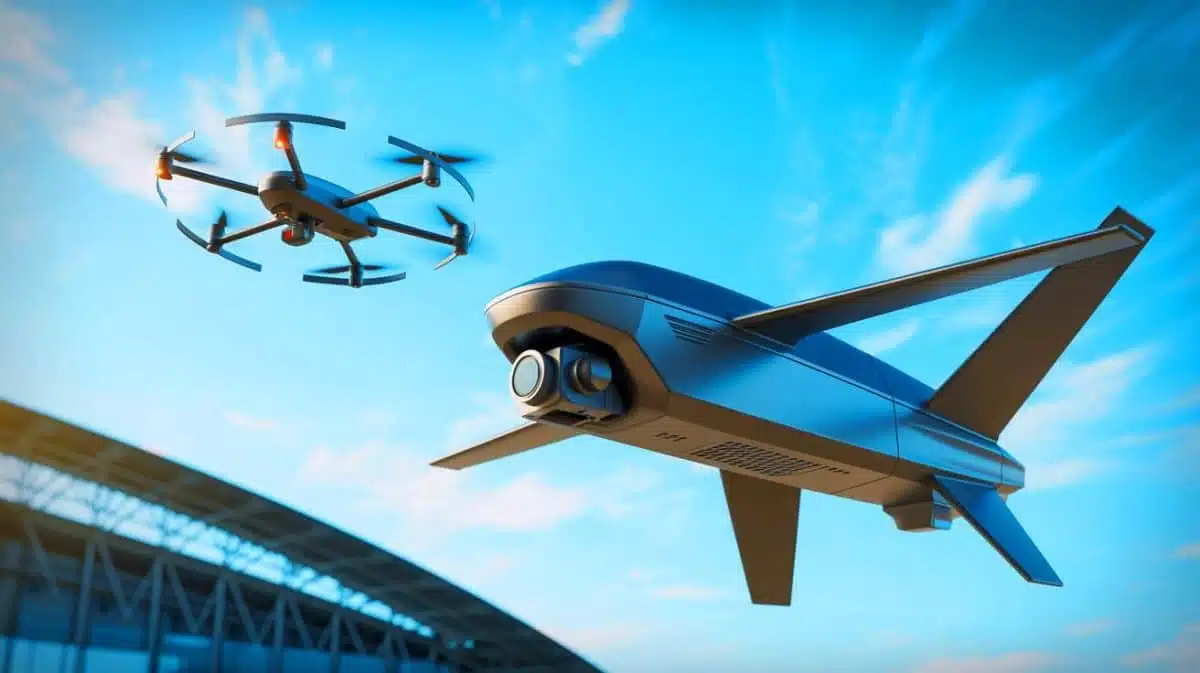| IN A NUTSHELL |
|
Drones have rapidly evolved from novel gadgets to critical tools and potential threats in numerous domains. From airports to nuclear facilities, these unmanned aerial vehicles (UAVs) have posed challenges for security and safety, necessitating the development of innovative anti-drone technologies. As drones become more integrated into daily life and military operations, the need for effective countermeasures has grown. These technologies not only aim to neutralize threats but also prevent collateral damage, ensuring public safety and infrastructure protection. But how do these systems work, and what challenges do they face in implementation?
Innovative Approaches to Neutralizing Drone Threats
The rise of drone incidents has prompted the development of various systems designed to counteract these UAVs. Some of the most effective methods include jamming radio frequencies, deploying kinetic defenses, and utilizing net-firing drones. Each technique comes with its own set of advantages and limitations. Jamming, for instance, is a relatively straightforward approach that disrupts the drone’s signal, forcing it to land or return to its origin. However, this method can interfere with other essential communications, such as emergency services and air traffic control.
Kinetic defenses, which involve shooting projectiles at drones, present another option. Although effective in disabling the device, these defenses pose risks of debris falling on people or property. A notable incident occurred in Saudi Arabia, where debris injured 12 individuals after a drone was intercepted. Net-firing drones, on the other hand, offer a more controlled solution, capturing the offending drone without causing destruction. As these technologies continue to evolve, striking a balance between efficacy and safety remains a priority.
The Art of Hacking into Drones
Among the advanced techniques in counter-drone warfare, hacking has emerged as a powerful tool. The Israeli firm D-Fend Solutions has developed EnforceAir, a system capable of taking control of adversarial drones. This technology allows operators to detect and hijack drones, landing them safely for analysis. Such capabilities provide significant advantages for law enforcement and national security, enabling the study of captured drones and the return of hobbyist devices in cases of innocent mistakes.
Despite its promise, hacking-based systems face limitations when dealing with military drones, which often boast robust cyber defenses. Nevertheless, the ability to take control of intruding drones represents a significant leap forward in counter-drone technology. By understanding the capabilities and weaknesses of these systems, authorities can better prepare for future threats.
Legal and Regulatory Challenges in Drone Defense
As anti-drone technologies advance, legal frameworks must adapt to keep pace with these innovations. Current federal laws primarily address manned aviation, creating challenges for the deployment of counter-drone systems. DJ Smith, an expert in drone surveillance, emphasizes the need for updated regulations and public awareness campaigns to ensure responsible drone use.
To address these challenges, lawmakers are advocating for legislation that empowers local and state authorities to utilize approved anti-drone technologies. Rep. Cory Mills introduced a bill to grant law enforcement agencies the authority to deploy these systems at large public events, with the goal of protecting citizens from potential drone threats. As these discussions progress, the integration of counter-drone technologies into mainstream security protocols appears increasingly likely.
Integrating Anti-Drone Systems into Everyday Security
The potential for widespread deployment of counter-drone systems is significant, with applications ranging from safeguarding critical infrastructure to securing public gatherings. National security experts foresee a future where these technologies become commonplace, protecting sensitive sites and ensuring public safety. However, achieving this vision requires overcoming regulatory hurdles and fostering public understanding of drone-related risks.
By equipping authorities with the necessary tools and knowledge, society can better address the challenges posed by rogue drones. As technologies continue to advance, the integration of anti-drone systems into everyday security measures will play a crucial role in maintaining safety and order. But what further innovations might we see in the realm of drone defense, and how will they reshape our approach to security in the coming years?
Did you like it? 4.5/5 (20)








Wow, this sounds like something out of a sci-fi movie! 🚀
How effective are these anti-drone systems against military-grade drones?
Isn’t jamming radio frequencies just asking for trouble with other devices? 🤔
Thank you for this informative article. It’s eye-opening to see how technology is evolving! 👍
Seems like a cat and mouse game between drones and anti-drone tech!